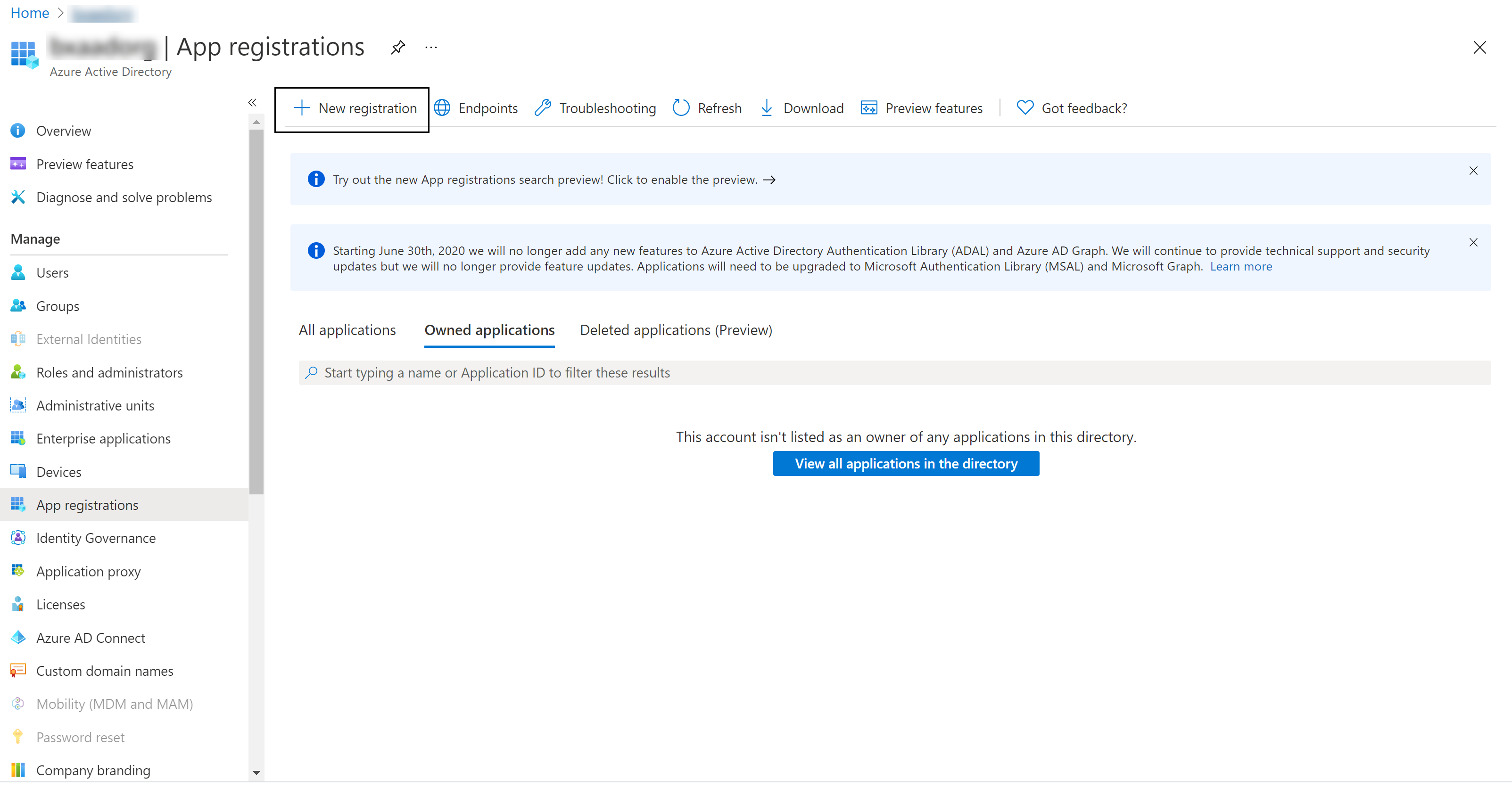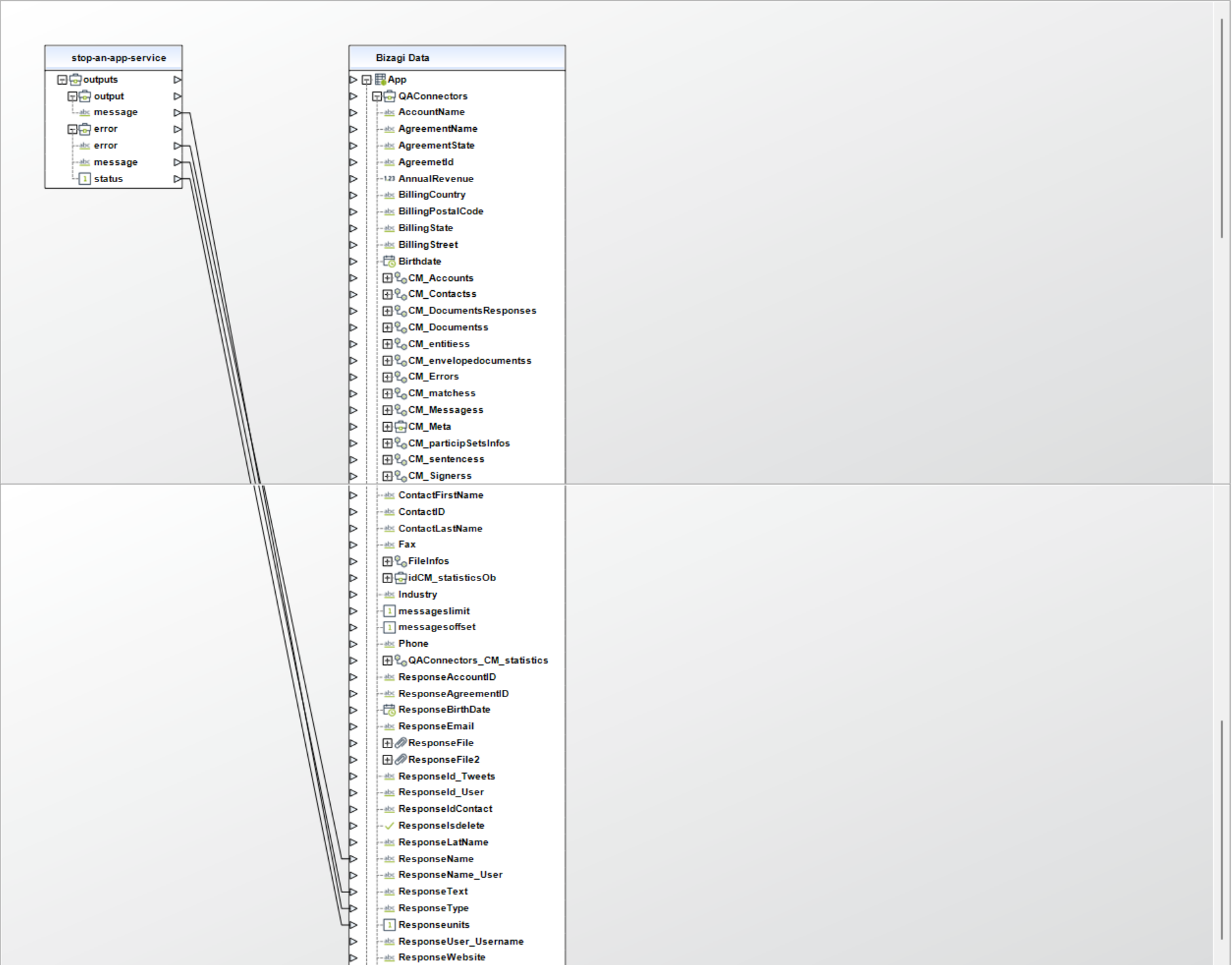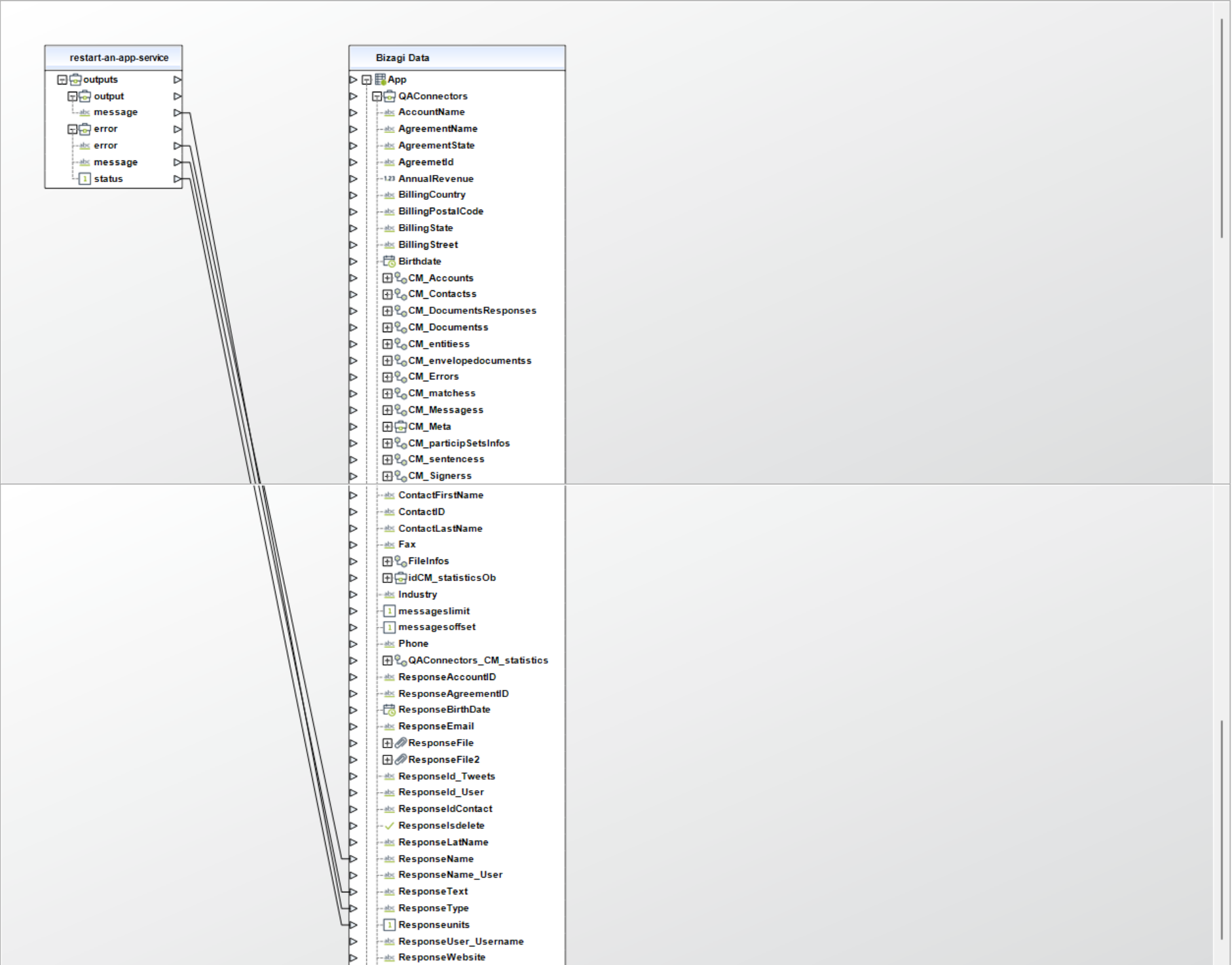Overview
The Azure Websites connector for Bizagi is available for download at Bizagi Connectors Xchange.
Through this connector, you will be able to connect your Bizagi processes to a Microsoft Azure's website account in order to use Azure Websites services API.
For more information about this connector's capabilities, visit Bizagi Connectors Xchange.
Before you start
In order to test and use this connector, you will need:
1.Bizagi Studio previously installed.
2.The connector installed, either through the Connectors Xchange or via manual installation as outlined in the Installing and managing connectors article.
3.An account at Microsoft Azure's website.
Configuring Azure
To use the connector, you will need the Client ID, Client Secret, and Tenant ID from your Azure account. These identifiers allow your application to authenticate and access Azure resources.
•Client ID: Identifies your application registered in Azure Active Directory.
•Client Secret: A password associated with your application to authenticate it.
•Tenant ID: Identifies the Azure Active Directory instance to which your organization belongs.
Get identifiers
Follow the following steps to get the identifiers you need to implement the Azure Websites connector.
1. Create a registered application in Azure Active Directory
Access the Azure Portal and sign in with your Microsoft account and select the App Registrations option form the side menu.

Click New registration to create a new application.

1.Provide a descriptive name for your application.
2.Select Accounts in this organizational directory only as the support account type and leave the Enable API permissions checkbox blank for now.
3.Click Register to create the application.

2. Get Client ID
On the application registration page, click the Overview option located in the side menu.
The Client ID is displayed in the Application ID (client) field.
Copy it and save it in a secure place.

3. Create Client Secret
On the Application Registration page, select the Certificates & Secrets option located in the side menu.

Click the New client secret button to create a new secret.

Enter a description for the secret, select the option to generate a new secret and click Add.

After that, the secret's value will be displayed on the page. Copy it and save it in a secure place. It's important to note that you won’t be able to view this value again after leaving the page, so make sure to save it before proceeding.
4. Get Tenant ID
1.On the application registration page, select the Overview option located on the side menu.
2.The Tenant ID is displayed in the Tenant ID field.
3.Copy it and save it in a secure place.

5. Get the Subscription ID
In the Azure Portal, select the Subscriptions option.

In the list of subscriptions, find the subscription you want to use with your application.
Copy the value shown in the Subscription ID field. You will need it later,

|
When registering your application, make sure to select only the permissions your app needs to function. This will help reduce the risk of your app making unwanted changes to your Azure resources. |
Configuring the connector
To configure the connector, particularly its authentication parameters, follow the steps outlined in the Connectors Configuration section of the Installing and managing connectors article.
For this configuration, consider the following authentication parameters:
•Authentication method: Custom.
Enter the CLIENT_ID, CLIENT_SECRET, TENANT_ID, and SUBSCRIPTION_ID collected in the previous steps.

|
Make sure the user specified in the Connector configuration has enough rights to perform these actions. |
Using the connector
This connector features several available methods of Azure Website services.
For general guidance on configuring a connector, refer to the Using connectors article.
When using the connector, make sure you consider the following details for each of the two available methods.
Available actions
Start an App Service
Starts a previously created web site in Azure Sites.
To configure its inputs, take into account the following descriptions:
•resourceGroupName (String - required): name of the resource group where the App Service is located.
•siteName (String - required): name of the App Service you want to start.

To configure the outputs of this action, you can map the output object to the corresponding entity in Bizagi. Make sure you map the attributes of the entity appropriately.
To configure the outputs, consider the following descriptions:
•message (String): response message indicating whether the operation was successfully completed.

For more information on how to use this method, refer to the official Microsoft Azure documentation.
Stop an App Service
Stops a previously created and running App Service.
To configure its inputs, take into account the following descriptions:
•resourceGroupName (String - required): name of the resource group where the App Service is located.
•siteName (String - required): name of the App Service you want to start.

To configure the outputs of this action, you can map the output object to the corresponding entity in Bizagi. Make sure you map the attributes of the entity appropriately.
To configure the outputs, consider the following descriptions:
•message (String): response message indicating whether the operation was successfully completed.

For more information on how to use this method, refer to the official Microsoft Azure documentation.
Restart an App Service
This action restarts an App Service by stopping it and then starting it again.
To configure the inputs for this action, please note:
•resourceGroupName (String - required): name of the resource group where the App Service is located.
•siteName (String - required): name of the App Service you want to start.

To configure the outputs of this action, map the output object to the corresponding entity in Bizagi, linking the attributes of this entity.
To configure the outputs, consider the following descriptions:
•message (String): response message indicating whether the operation was successfully completed.

For more information on how to use this method, refer to the official Microsoft Azure documentation.
Eliminate an App Service
This action removes an existing App Service.
To configure the inputs for this action, please note:
•resourceGroupName (String - required): name of the resource group where the App Service is located.
•siteName (String - required): name of the App Service you want to start.

To configure the outputs of this action, map the output object to the corresponding entity in Bizagi, linking the attributes of this entity.
To configure the outputs, consider the following descriptions:
•message (String): response message indicating whether the operation was successfully completed.

For more information on how to use this method, refer to the official Microsoft Azure documentation.
Get information of an App Service
This action retrieves detailed information about a specific App Service.
To configure the inputs for this action, please note:
•resourceGroupName (String - required): name of the resource group where the App Service is located.
•siteName (String - required): name of the App Service you want to start.

To configure the outputs of this action, map the output object to the corresponding entity in Bizagi, linking the attributes of this entity.
To configure the outputs, consider the following descriptions:
•id (string): Represents the unique identifier of the App Service.
•name (string): Represents the name of the App Service.
•type (string): Indicates the resource type, in this case Microsoft.Web/sites.
•kind (string): Specifies the type of App Service, for example, app for web applications.
•location (string): Represents the Azure region where the App Service is located.
•properties (object): Contains specific properties of the App Service:
ostate (string): Indicates the current state of the App Service, such as Running, Stopped, or Pending.
oowner (string): Represents the identifier of the App Service owner, if any.
oenabled (boolean): Indicates whether the App Service is enabled or not.
oresourceGroup (string): Represents the name of the resource group to which the App Service belongs.

For more information on how to use this method, refer to the official Microsoft Azure documentation.
List App Services per group of resources
This action retrieves detailed information about each of the existing App Services in a resource group.
To configure the inputs for this action, please note:
•resourceGroupName (String - required): name of the resource group where the App Service is located.

To configure the outputs of this action, map the output object to the corresponding entity in Bizagi, linking the attributes of this entity.
To configure the outputs, consider the following descriptions:
•id (string): Represents the unique identifier of the App Service.
•name (string): Represents the name of the App Service.
•type (string): Indicates the resource type, in this case Microsoft.Web/sites.
•kind (string): Specifies the type of App Service, for example, app for web applications.
•location (string): Represents the Azure region where the App Service is located.
•properties (object): Contains specific properties of the App Service:
ostate (string): Indicates the current state of the App Service, such as Running, Stopped, or Pending.
oowner (string): Represents the identifier of the App Service owner, if any.
oenabled (boolean): Indicates whether the App Service is enabled or not.
oresourceGroup (string): Represents the name of the resource group to which the App Service belongs.

For more information on how to use this method, refer to the official Microsoft Azure documentation.
Get environment variables of an App Service
This action retrieves the configuration variables of a specific App Service.
To configure the inputs for this action, please note:
•resourceGroupName (String - required): name of the resource group where the App Service is located.
•siteName (String - required): name of the App Service you want to start.

To configure the outputs of this action, map the output object to the corresponding entity in Bizagi, linking the attributes of this entity.
To configure the outputs, consider the following descriptions:
•id (string): Represents the unique identifier of the App Service.
•name (string): Represents the name of the App Service.
•type (string): Indicates the resource type, in this case Microsoft.Web/sites.
•location (string): Represents the Azure region where the App Service is located.
•properties (object): Contains specific properties of the App Service:
oname (string): Name of the configuration variable.
ovalue (string): Value of the configuration variable.

For more information on how to use this method, refer to the official Microsoft Azure documentation.
Last Updated 10/3/2024 12:16:52 PM
